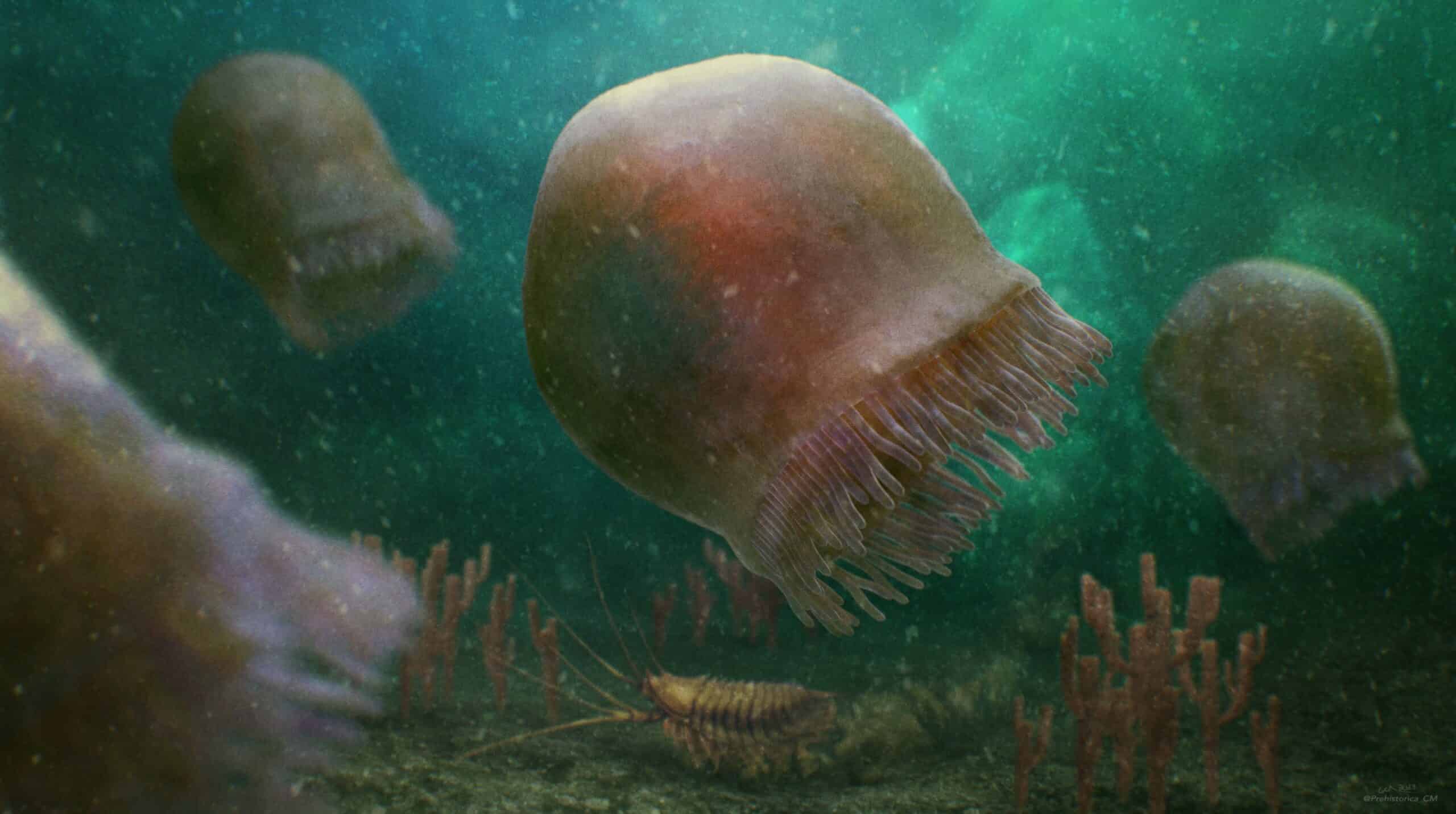Researchers working in Canada have uncovered the oldest preserved adult jellyfish ever found. The jellyfish dates from 505 million years ago — hundreds of millions of years before dinosaurs emerged.
The new species, named Burgessomedusa phasmiformis, looks like a big jellyfish with a bell-shaped body of up to 20 cm high. Scientists uncovered it in the famous Burgess Shale area. This area is known for many other well-preserved fossils, but even so, the finding was spectacular.

Jellyfish have been gracefully drifting through Earth’s oceans for an incredibly long time. However, unraveling their exact origins represents a challenging task. Jellyfish fossils are very rare. Their elusive nature in the fossil record stems from the fact that jellyfish consist of a staggering 95% water. This makes them highly susceptible to rapid decay and it’s very unlikely for them to fossilize.
But there’s always an exception to the rule. Paleontologists at the Royal Ontario Museum in Toronto have now found a collection of 170 jellyfish fossils from the Cambrian period that are preserved in impressive detail. Most still have tentacles extending from their bodies, while some even preserve their stomach content.
“Although jellyfish and their relatives are thought to be one of the earliest animal groups to have evolved, they have been remarkably hard to pin down in the Cambrian fossil record. This discovery leaves no doubt they were swimming about at that time,” co-author Joe Moysiuk from the University of Toronto said in a news release.
Impressive fossils
Jellyfish are classified as medusozoans, creatures that produce medusae, and encompass various species like box jellies, hydroids and stalked jellyfish. Medusozoans belong to the ancient group of animals known as Cnidaria, which also includes corals and sea anemones, and are believed to have originated at least 600 million years ago.
However, evidence of this is limited. Most fossils from before the Cambrian period are microscopic, making it difficult to obtain information. Paleontologists have found in the last two decades well-preserved fossils that are similar in age to the Burgess Shale but Moysiuk and his team believe they are from comb jellies, a separate group of animals.

The Burgess Shale site has preserved many soft animals from the Cambrian period. It was once the bed of a body of water and the animals residing there eventually sank into the fine silt. Over millennia, the combination of time and pressure performed their duty, effectively preserving these creatures, including their soft tissues, into fossils.
“Finding such incredibly delicate animals preserved in rock layers on top of these mountains is such a wondrous discovery. Burgessomedusa adds to the complexity of Cambrian food webs,” Jean-Bernard Caron, study author, said in a news release. “This adds yet another remarkable lineage of animals that the Burgess Shale has preserved.”
David Gold, a paleobiologist at the University of California, Davis, who was not involved in the new study, told The New York Times Burgessomedusa’s shape is similar to a modern box jellyfish – predators with a deadly sting. However, it lacks some of the sensory structures found in modern jellyfish, such as the eyes they use to hunt.
Overall, the new study, published in the journal Proceedings of the Royal Society B, shows that the Cambrian food chain was much more complex than previously thought, and that predation wasn’t limited to swimming arthropods, the researchers said. It also gives us a new baseline to calculate the timeline of jellyfish evolution.









